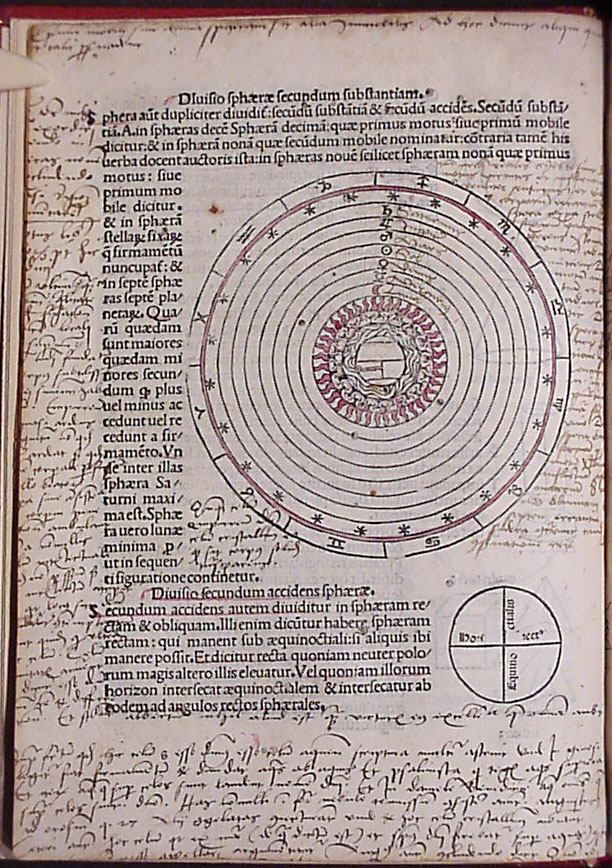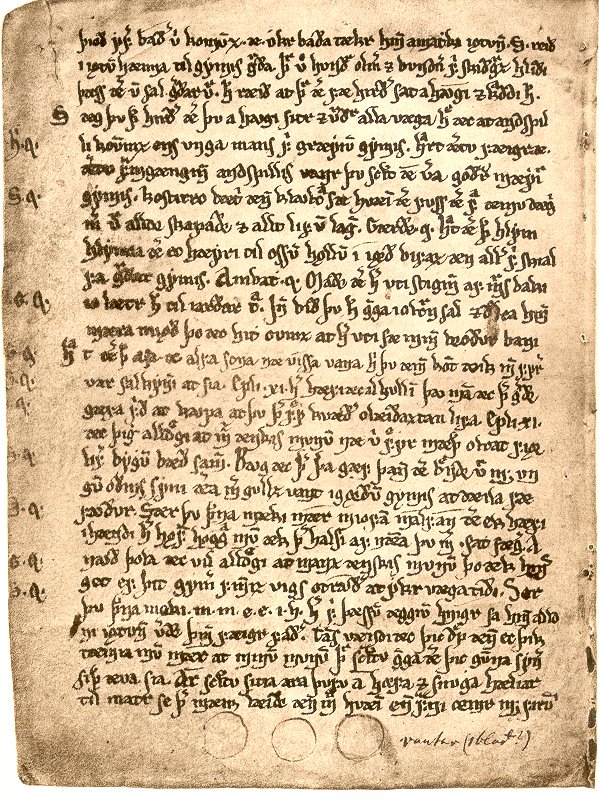|
Algorismus (Norse Text)
''Algorismus'' is a short treatise on mathematics, written in Old Icelandic. It is the oldest text on mathematics in a Scandinavian language and survives in the early fourteenth-century manuscript Hauksbók, a large book written and compiled by Icelanders and taken to Norway during the later part of the 13th century by Haukur Erlendsson. It is probably a translation from Latin into Old Norse of some pages included in more ancient books such as ''Carmen de Algorismo'' by De Villa Dei of 1200, ''Liber Abaci'' by Fibonacci Fibonacci (; also , ; – ), also known as Leonardo Bonacci, Leonardo of Pisa, or Leonardo Bigollo Pisano ('Leonardo the Traveller from Pisa'), was an Italian mathematician from the Republic of Pisa, considered to be "the most talented Western ... of 1202, and ''Algorismus Vulgaris'' by De Sacrobosco of 1230. References Icelandic literature Icelandic manuscripts Mathematics manuscripts Mathematics textbooks Old Norse literature 14th-century books ... [...More Info...] [...Related Items...] OR: [Wikipedia] [Google] [Baidu] |
Mathematics
Mathematics is an area of knowledge that includes the topics of numbers, formulas and related structures, shapes and the spaces in which they are contained, and quantities and their changes. These topics are represented in modern mathematics with the major subdisciplines of number theory, algebra, geometry, and analysis, respectively. There is no general consensus among mathematicians about a common definition for their academic discipline. Most mathematical activity involves the discovery of properties of abstract objects and the use of pure reason to prove them. These objects consist of either abstractions from nature orin modern mathematicsentities that are stipulated to have certain properties, called axioms. A ''proof'' consists of a succession of applications of deductive rules to already established results. These results include previously proved theorems, axioms, andin case of abstraction from naturesome basic properties that are considered true starting poin ... [...More Info...] [...Related Items...] OR: [Wikipedia] [Google] [Baidu] |
Old Icelandic
Old Norse, Old Nordic, or Old Scandinavian, is a stage of development of North Germanic dialects before their final divergence into separate Nordic languages. Old Norse was spoken by inhabitants of Scandinavia and their overseas settlements and chronologically coincides with the Viking Age, the Christianization of Scandinavia and the consolidation of Scandinavian kingdoms from about the 7th to the 15th centuries. The Proto-Norse language developed into Old Norse by the 8th century, and Old Norse began to develop into the modern North Germanic languages in the mid-to-late 14th century, ending the language phase known as Old Norse. These dates, however, are not absolute, since written Old Norse is found well into the 15th century. Old Norse was divided into three dialects: ''Old West Norse'' or ''Old West Nordic'' (often referred to as ''Old Norse''), ''Old East Norse'' or ''Old East Nordic'', and ''Old Gutnish''. Old West Norse and Old East Norse formed a dialect continuu ... [...More Info...] [...Related Items...] OR: [Wikipedia] [Google] [Baidu] |
Hauksbók
Hauksbók (; 'Book of Haukr'), Reykjavík, Stofnun Árna Magnússonar AM 371 4to, AM 544 4to and AM 675 4to, is an Icelandic manuscript, now in three parts but originally one, dating from the 14th century. It was created by the Icelander Haukr Erlendsson. It is now fragmentary, with significant portions being lost, but is the first surviving witness to many of the texts it contains (although in most cases Haukr is known to have been copying from earlier, lost manuscripts). Among these are the section on mathematics called '' Algorismus'' and the text of ''Hervarar saga ok Heiðreks''. Composition Hauksbók is associated with an Icelandic lawspeaker named Haukr Erlendsson: although the work of several scribes, the vast majority is in Haukr's hand. Palaeographical evidence allowed Professor Stefán Karlsson, director of the Árni Magnússon Institute for Icelandic Studies, to date the manuscript to between 1302 and 1310. As long back as it is possible to trace the manuscript it ... [...More Info...] [...Related Items...] OR: [Wikipedia] [Google] [Baidu] |
Haukur Erlendsson
Haukr or Hauk Erlendsson (died 1334; Modern is, Haukur Erlendsson ) was lawspeaker (lawman) of Iceland, later lawspeaker and knight of Norway, known for having compiled a number of Icelandic sagas and other materials mostly in his own hand, bound in a book called the '' Hauksbók'' after him. Life Hauk was born the son of aka Erlend ''digre'' "the fat," who died 1312."Erlendur digre" occurs in a letter by Bishop Árni Þorláksson of Skálholt dated 1286, '' Diplomatarium islandicum'', Vol. II, p.136-7. Cf. , whose index clarifies this refers to Erlendur Ólafsson sterki The year of Haukr's birth is not known, but his mother's name was Jorunn ( non, Jórunn), whose ancestry is traceable to a brother of King Halfr of Hordaland, hero of ''Hálfs saga ok Hálfsrekka''.Hogni the White given in ''Landnámabók'' Part II, Ch. XIX as the forebear of Hauk Erelendson's mother was the grandson of Otrygg, brother of King Halfr according to an earlier passage (''Landnámabók'' Part II, C ... [...More Info...] [...Related Items...] OR: [Wikipedia] [Google] [Baidu] |
De Villa Dei
Alexander of Villedieu was a French author, teacher and poet, who wrote text books on Latin grammar and arithmetic, everything in verse. He was born around 1175 in Villedieu-les-Poêles in Normandy, studied in Paris, and later taught at Dol in Brittany. His greatest fame stems from his versified Latin grammar book, the ''Doctrinale Puerorum''. He died in 1240, or perhaps in 1250. He was a Franciscan and a Master of the University of Paris. His ''Doctrinale puerorum'', a versified grammar, soon became a classic. It was composed around 1200, and was all written in '' leonine hexameters''. Even after several centuries, with the advent of printing, it appeared in countless editions in Italy, Germany and France. It was based on the older works of Donatus and Priscian. Alexander also wrote a short tract on arithmetic called ''Carmen de Algorismo''—''the Poem about Arithmetic'', which also achieved a wide distribution.While the ''Doctrinale'' was in leonine verse, the ''Carme ... [...More Info...] [...Related Items...] OR: [Wikipedia] [Google] [Baidu] |
Liber Abaci
''Liber Abaci'' (also spelled as ''Liber Abbaci''; "The Book of Calculation") is a historic 1202 Latin manuscript on arithmetic by Leonardo of Pisa, posthumously known as Fibonacci. ''Liber Abaci'' was among the first Western books to describe the Hindu–Arabic numeral system and to use symbols resembling modern "Arabic numerals". By addressing the applications of both commercial tradesmen and mathematicians, it promoted the superiority of the system, and the use of these glyphs. Although the book's title has also been translated as "The Book of the Abacus", writes that this is an error: the intent of the book is to describe methods of doing calculations without aid of an abacus, and as confirms, for centuries after its publication the algorismists (followers of the style of calculation demonstrated in ''Liber Abaci'') remained in conflict with the abacists (traditionalists who continued to use the abacus in conjunction with Roman numerals). The historian of mathematics C ... [...More Info...] [...Related Items...] OR: [Wikipedia] [Google] [Baidu] |
Fibonacci
Fibonacci (; also , ; – ), also known as Leonardo Bonacci, Leonardo of Pisa, or Leonardo Bigollo Pisano ('Leonardo the Traveller from Pisa'), was an Italian mathematician from the Republic of Pisa, considered to be "the most talented Western mathematician of the Middle Ages". The name he is commonly called, ''Fibonacci'', was made up in 1838 by the Franco-Italian historian Guillaume Libri and is short for ('son of Bonacci'). However, even earlier in 1506 a notary of the Holy Roman Empire, Perizolo mentions Leonardo as "Lionardo Fibonacci". Fibonacci popularized the Indo–Arabic numeral system in the Western world primarily through his composition in 1202 of '' Liber Abaci'' (''Book of Calculation''). He also introduced Europe to the sequence of Fibonacci numbers, which he used as an example in ''Liber Abaci''. Biography Fibonacci was born around 1170 to Guglielmo, an Italian merchant and customs official. Guglielmo directed a trading post in Bugia (Béjaïa) in mode ... [...More Info...] [...Related Items...] OR: [Wikipedia] [Google] [Baidu] |
Johannes De Sacrobosco
Johannes de Sacrobosco, also written Ioannes de Sacro Bosco, later called John of Holywood or John of Holybush ( 1195 – 1256), was a scholar, monk, and astronomer who taught at the University of Paris. He wrote a short introduction to the Hindu-Arabic numeral system. Judging from the number of manuscript copies that survive today, for the next 400 years it became the most widely read book on that subject. He also wrote a short textbook which was widely read and influential in Europe during the later medieval centuries as an introduction to astronomy. In his longest book, on the computation of the date of Easter, Sacrobosco correctly described the defects of the then-used Julian calendar, and recommended a solution similar to the modern Gregorian calendar three centuries before its implementation. Very little is known about the education and biography of Sacrobosco. For one thing, his year of death has been guessed at 1236, 1244, and 1256, each of which is plausible and ... [...More Info...] [...Related Items...] OR: [Wikipedia] [Google] [Baidu] |
Icelandic Literature
Icelandic literature refers to literature written in Iceland or by Icelandic people. It is best known for the sagas written in medieval times, starting in the 13th century. As Icelandic and Old Norse are almost the same, and because Icelandic works constitute most of Old Norse literature, Old Norse literature is often wrongly considered a subset of Icelandic literature. However, works by Norwegians are present in the standard reader ''Sýnisbók íslenzkra bókmennta til miðrar átjándu aldar'', compiled by Sigurður Nordal on the grounds that the language was the same. Early Icelandic literature The medieval Icelandic literature is usually divided into three parts: * Eddic poetry * Sagas * Skaldic poetry The ''Eddas'' There has been some discussion on the probable etymology of the term "Edda". Most say it stems from the Old Norse term ''edda'', which means great-grandmother, but some see a reference to Oddi, a place where Snorri Sturluson (the writer of the '' Prose Edda'') w ... [...More Info...] [...Related Items...] OR: [Wikipedia] [Google] [Baidu] |
Icelandic Manuscripts
Snorri Sturluson ( ; ; 1179 – 22 September 1241) was an Icelandic historian, poet, and politician. He was elected twice as lawspeaker of the Icelandic parliament, the Althing. He is commonly thought to have authored or compiled portions of the '' Prose Edda'', which is a major source for what is today known as Norse mythology, and '' Heimskringla'', a history of the Norwegian kings that begins with legendary material in '' Ynglinga saga'' and moves through to early medieval Scandinavian history. For stylistic and methodological reasons, Snorri is often taken to be the author of '' Egil's saga''. He was assassinated in 1241 by men claiming to be agents of the King of Norway. Biography Early life Snorri Sturluson was born in (commonly transliterated as Hvamm or Hvammr) as a member of the wealthy and powerful Sturlungar clan of the Icelandic Commonwealth, in AD 1179. His parents were ''Sturla Þórðarson the Elder'' of ''Hvammur'' and his second wife, ''Guðný Böðvarsd� ... [...More Info...] [...Related Items...] OR: [Wikipedia] [Google] [Baidu] |
Mathematics Manuscripts
Mathematics is an area of knowledge that includes the topics of numbers, formulas and related structures, shapes and the spaces in which they are contained, and quantities and their changes. These topics are represented in modern mathematics with the major subdisciplines of number theory, algebra, geometry, and analysis, respectively. There is no general consensus among mathematicians about a common definition for their academic discipline. Most mathematical activity involves the discovery of properties of abstract objects and the use of pure reason to prove them. These objects consist of either abstractions from nature orin modern mathematicsentities that are stipulated to have certain properties, called axioms. A ''proof'' consists of a succession of applications of deductive rules to already established results. These results include previously proved theorems, axioms, andin case of abstraction from naturesome basic properties that are considered true starting points of t ... [...More Info...] [...Related Items...] OR: [Wikipedia] [Google] [Baidu] |






.jpg)